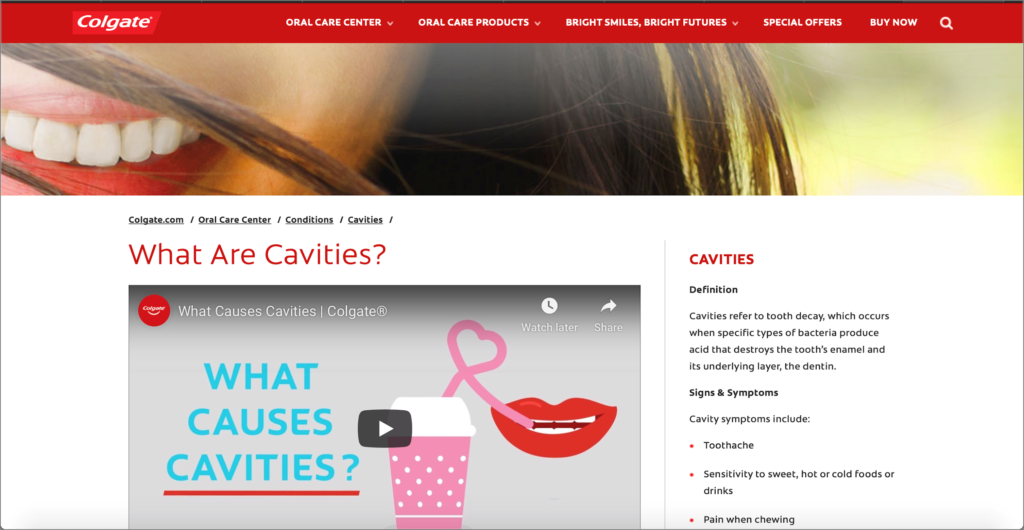For many content marketers, getting their blog posts and pages to rank on search engines is a top priority. Yet with the ever-changing algorithm, figuring out SEO and ranking for search queries becomes a major challenge.
But can you blame Google for constantly updating their search algorithm? After all, it’s the reason they’ve been able to give users more relevant search results each time.
This is actually a good thing for content marketers. Because of Google’s promise to constantly update and improve their search algorithm, now is the best time to create high-value, targeted content that stands the test of any algorithm change.
Before we jump into the best strategy to do just that, let’s take a look at some important SEO trends for 2020.
SEO trends projected for 2020
Voice search
Three years ago, Google reported that 20% of search queries on mobile were done via voice. This trend is only expected to get higher as more and more gadgets and operating systems adapt to smarter virtual assistants and voice search capabilities.
And because making queries via text and voice differ – for example, people are more likely to make voice queries by asking a question – then your optimization strategies will probably differ. Optimizing for voice queries will entail more natural conversational tones, local SEO, and even optimizing sites for mobile.
BERT
BERT will be the biggest algorithm change from Google since RankBrain. According to the tech giant, BERT helps search engines understand natural language even better than before, picking up on nuances and contexts of words to be able to provide better search results to users each time.
User experience
Over the past several years, we’ve seen Google’s algorithms change to prioritize good-value content (a big win for marketers who previously had to go against black hat SEO strategies), as well as user experience in their search rankings.
Some metrics that tell Google whether or not your site is providing good user experience include bounce rate, average session duration, page views, and dwell time.
Quality content
Content has always been king, and that fact remains true with SEO.
We now need to focus on providing high-quality content that is relevant for users, especially if they came across your site organically.
This is only a virtuous cycle that keeps on giving. If Google learns that a user was happy with your content as a search result that was relevant and helpful to their query, then they will keep pushing your rankings up higher and higher, allowing you to reach more users organically.
Content length
A trend that’s been steadily observed in SEO marketing the past few years is that long content will typically perform better.
One explanation could be that longer content is often more exhaustive than shorter posts, being more valuable to users looking to understand the topic.
But marketers ought to be careful and balance out quality and quantity. It’s not enough to have long-form posts; it must also be valuable and informational, not redundant for the sake of hitting word count goals.
CTR and dwell time
Click-through rate (CTR) and dwell time, as we briefly mentioned under the User Experience trend, play an important role in helping you rank on search engines.
CTR indicates how many people saw your content as a search result versus how many people actually clicked through to the post. So if a thousand people saw your page as a search result but none of them clicked, you can expect your search engine rankings to tank.
Dwell time, on the other hand, is how long users stay on a page from a search result before returning to the search page. Dwell time is influenced by many factors, such as a site that’s easy to read or navigate. And the longer dwell time is on your site, the more you can expect Google to reward your page.
Because of these, you might want to focus on keeping your website running lightning fast to ensure visitors have a seamless experience and aren’t encouraged to leave after only a minute or two.
How topic clusters can help you win the ever-changing SEO game
When you’re in eCommerce, you want your content to be seen and discovered. After all, the less you pay to acquire leads and the more organic traffic you enjoy, the better for your site and ROI.
Our recommendation? Improve your SEO to get your site discovered by target customers.
With all these new trends and changes we can expect in the coming years, we propose using topic clusters to help you stay on top of the SEO game.
What are topic clusters, exactly?
In a nutshell, the topic cluster model is based on having a single pillar page that serves as your main hub about a broad topic, where multiple content pages related to the topic link to and from said pillar page.

This strategy came up mostly out of necessity for content marketers to stay ahead of changing algorithms, but at the end of the day, it’s proven to be a win for everyone: users, content marketers, and even search engines themselves.
Here are a few ways topic clusters will help you keep afloat amidst algorithm changes and SEO trends.
Provide quality content
Because topic clusters involve both a pillar page and different content pages that go into more detail about the topic, you’re able to provide quality content for users, allowing them to learn more about specific topics from a broad topic, all without leaving your site.
Establish yourself as an authority
By using topic clusters, you can easily become the authority in your niche, by providing value and information about a general topic and going into detail about related but more specific topics.
Improve user experience on your website
If users want to learn more about a certain topic, they don’t need to leave your site to do so. Because your pillar pages and cluster content are all interlinked, users are easily able to navigate and learn more if they want.
Higher rankings
Topic clusters encourage users to stay longer on your site and click through to multiple pages. This tells Google that your page is valuable for people, thus giving you higher rankings in the long run.
Steps to create a topic cluster
If you want to get started creating your own topic clusters for 2020, here’s what you need to know.
Choose a topic
Look for an overarching topic in your niche you’d like to rank for. Be sure to pick a keyword that’s general enough to encompass a range of other subtopics.
For example, “content marketing” is broad enough to cover multiple subtopics like “content marketing strategies,” “how to create a content marketing plan,” or “how to determine a content marketing budget.”
Colgate’s own content strategy does a great job of doing this. Here’s an example of one of their pillar blog posts for the search term “cavities.”

Then, throughout the post, they link out to different, more specific content that’s related to the topic, such as “how to get rid of cavities in two days” and “why a homemade tooth filling won’t fix your cavity.”

If you’re feeling stuck on what topics might be helpful for your audience, refer back to your buyer personas to see which pain points you can start addressing with helpful blog content.
List your subtopics
Once you’ve chosen a broad topic, it’s time to choose your clusters. Do some keyword research to check for any relevant topics around your chosen pillar topic.
HubSpot has an SEO tool that can provide enough topics for your list, letting you easily and visually map out your topic cluster like so:

To do a sense check, you can also consult other useful SEO tools to help you research and plan for topics based on given keywords.
Be sure to prioritize content with high search volume and relatively low competition.
Conduct a content audit
Chances are, before you created your first topic cluster, you already had some content on your site.
This content doesn’t have to go to waste. Do a thorough content audit to check for posts that fall under your pillar topic, so you can use them to link to your pillar post and vice versa.
For example, myUKmailbox provides mail forwarding and “buy for me” services. They previously published a blog post called “What is a Shopping Concierge.” This could be a potential pillar post topic for the keyword “shopping concierge.”

They can also evaluate different posts that might fall under this umbrella topic, such as “places to find a shopping concierge” or “what to look for in a shopping concierge.”
Map existing pages and content to topics
Once you’ve done a complete audit of your existing content, create or update your pillar content that links to these pages. And vice versa, link these pages back to your pillar page.
Pro-tip: Keep your visual topic cluster model with you, so you don’t miss anything.
Identify gaps
Once you’ve successfully linked existing content together, you can identify which content you can still create to add as cluster content.
Going back to the previous example with myUKmailbox, if they find that they don’t have a post for “where to find shopping concierge,” they can mark that as cluster content that’s yet to be made.
Create a content plan
Last but not least, it’s time to create your content plan. Schedule time to create missing content based on your priorities, then start driving traffic to your new pillar pages and cluster content by sending them out to your email list.
Make your content strategy invaluable to your readers in order to get them to convert into leads and eventually into sales.
Monitoring and measuring your topic clusters for success
When you want to see how your topic clusters are performing, look at things from a broader perspective.
For example, you might have one page that is not converting many new leads. But if you look at it from a wider lens, it might be one of the posts that lets people click through to a more high-converting page.
After a while, you’ll be able to identify which posts and topics are bringing you leads, revenue, and backlinks.
Key Takeaways
It’s hard to imagine that search engine improvements and changes are ever going to stop. But you don’t have to be afraid of the changes – using the topic cluster model can be a great way to stay ahead in the SEO game, especially since it’s the model that best implements current (and future) best SEO practices: providing unparalleled value, establishing your expertise, and keeping users on your website.
____________________________________
About the Author
Kevin Payne is a content marketing consultant that helps software companies build marketing funnels and implement content marketing campaigns to increase their inbound leads.






